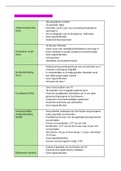Overig
School Neuropsychology Articles Summaries
- Vak
- Instelling
This document contains summaries of all of the mandatory articles for the course School Neuropsychology: Mind, Brain & Education. The summaries contain illustrations as further explanation of certain theories/models. The articles are in the same order as that how lectures were given.
[Meer zien]













